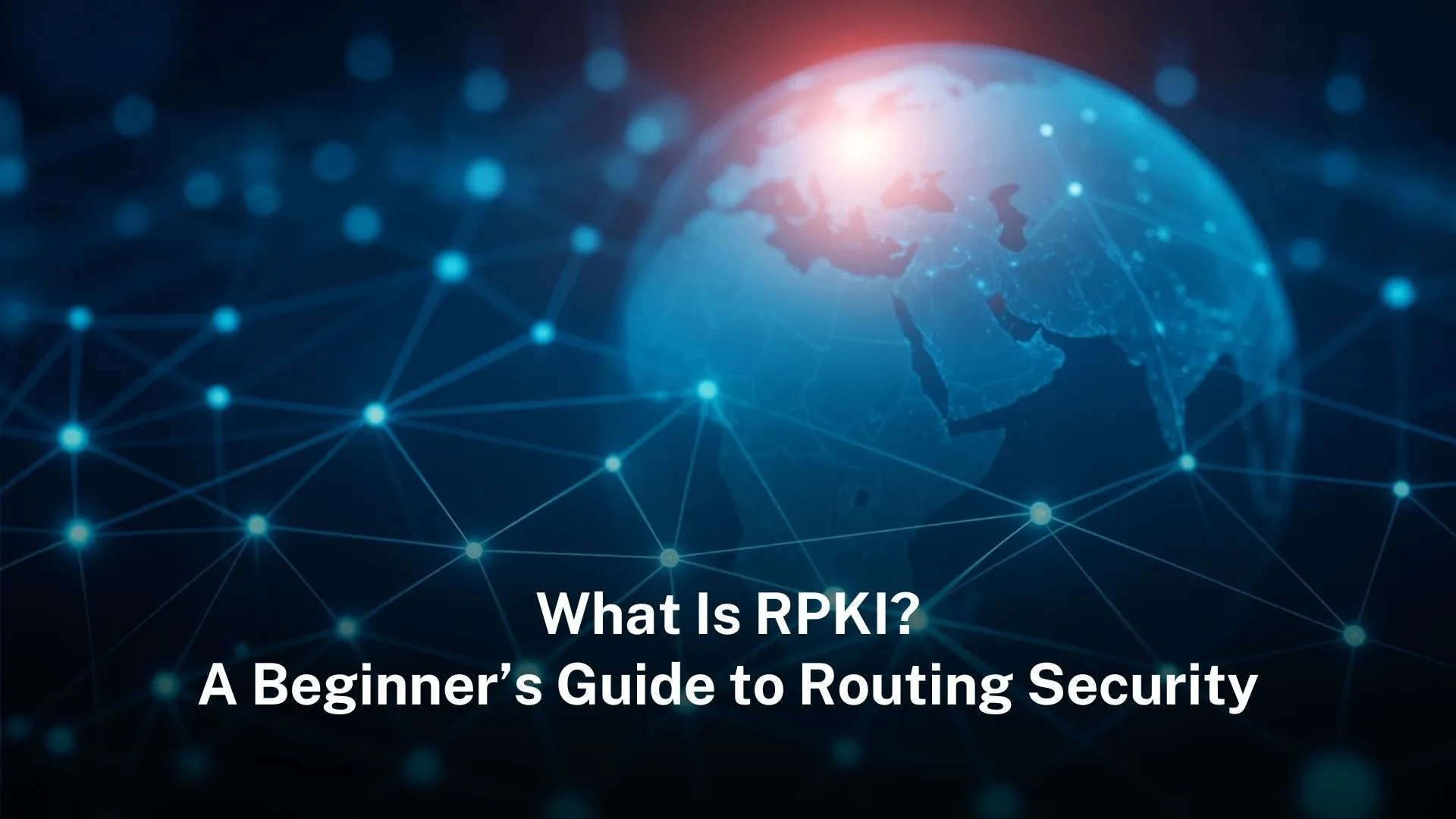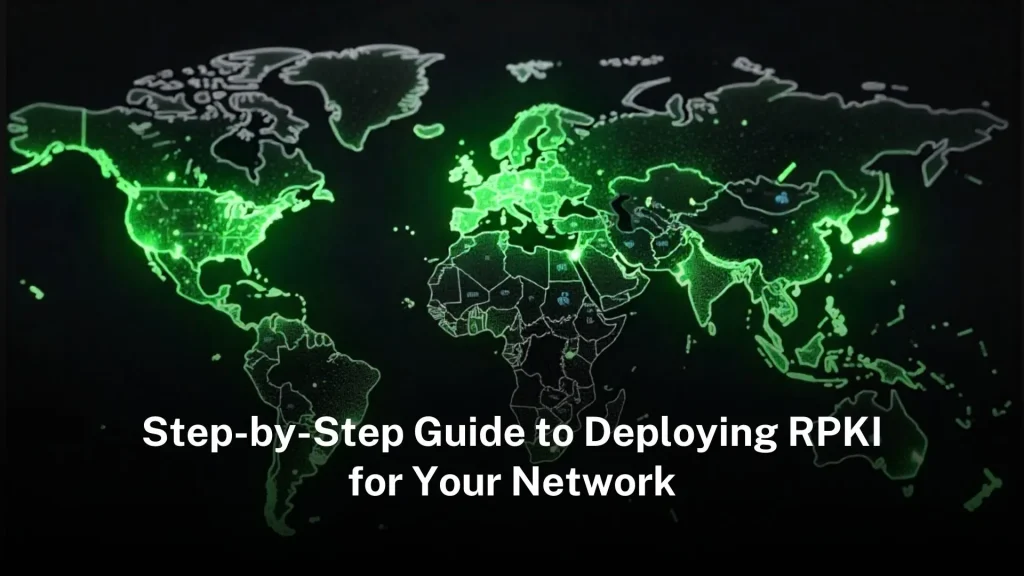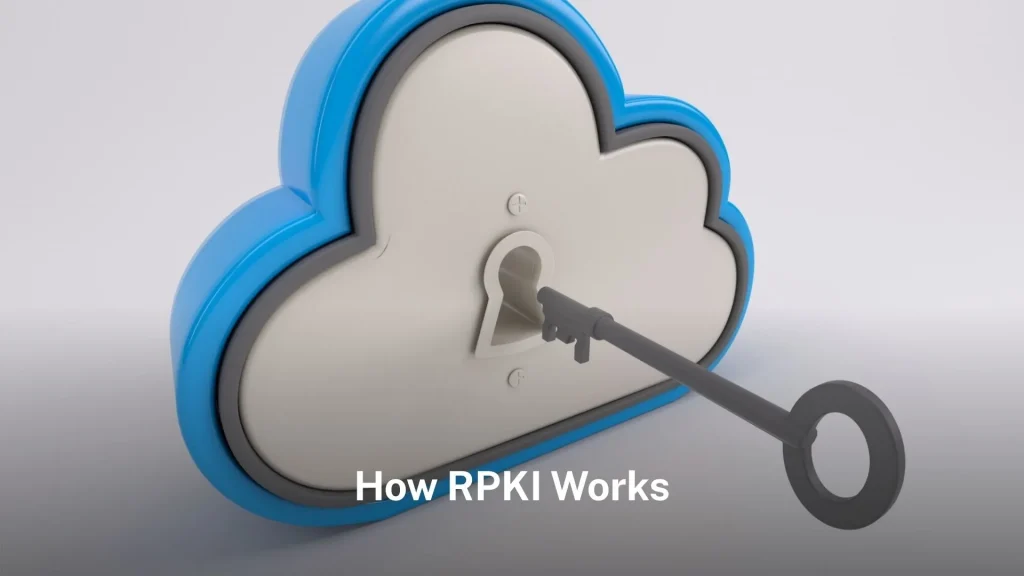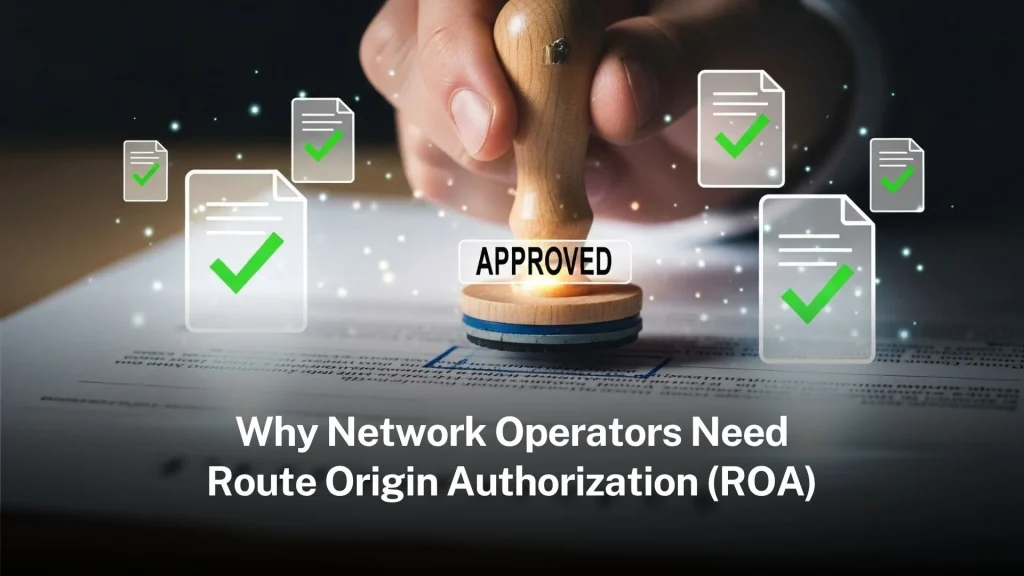Every online activity depends on routing. Messages, videos, and websites must move from one point to another through a chain of routers. Each step is based on routing information. If this information is not correct, the traffic can be sent in the wrong direction. This can break services and open the system to attack. The more the internet grows, the more important routing security becomes.
One of the most common risks is route hijacking. This happens when someone spreads false path details. The traffic then follows the wrong path, sometimes without anyone noticing right away. Private data may be exposed, and businesses may lose service. These cases show why the internet needs more than just fast routes. It also needs secure ones.
RPKI is a way to answer this need. It gives networks a way to prove their routes are real. The system uses certificates linked to IP addresses. When a route is sent out, others can check if the certificate matches. If it does not, the route can be dropped. This reduces the chance of hijacks and builds more confidence across the internet.
Basics of Internet Routing
Every online action depends on routing. When someone sends a message, it is broken into packets. Each packet passes through routers.
The main system for guiding traffic between networks is BGP. BGP is short for Border Gateway Protocol. It allows networks to exchange details about which IP ranges they can deliver. Routers then use this knowledge to choose the correct path. This shared protocol makes the internet work as one large system.
Even though BGP is central, it is not perfect. It trusts the data it receives. If one network sends false details, the error spreads. This is how accidents and attacks happen. Since BGP does not have built-in checks, it depends too much on trust.
When trust fails, the effects are wide. A wrong route can block access to websites, slow connections, or send traffic into the hands of attackers. This shows how fragile the system can be. Routing security tools are needed to prevent such risks and keep the internet stable.
How RPKI Works
RPKI works by proving who has the right to announce certain routes. It does this by attaching certificates to IP address blocks. These certificates serve as digital proof. When a route is shared, the certificate shows that it comes from the correct owner.
The process begins with RIRs, or Regional Internet Registries. They manage the address space and issue certificates to organisations. With these certificates, organisations create Route Origin Authorisations (ROAs). A ROA sets the rule about which network can advertise the addresses.
Routers then check each route with the ROAs. A match means the route is valid. A mismatch makes the route invalid, and routers can block it. This stops both accidents and intentional hijacks. The use of cryptography ensures that certificates are secure.
This creates a trust chain across the system. The RIRs stand at the top, confirming address holders. Providers and customers inherit that trust. RPKI adds verification to BGP while still letting it run as usual.
Benefits of Using RPKI
RPKI strengthens routing by adding validation. Every route can be checked against a certificate. Invalid ones are rejected, which reduces the risk of hijacking. This makes the overall system more secure.
Users benefit from this security. Their traffic flows along safe routes. Online services, such as payments and digital platforms, rely on this kind of trust. With RPKI, the danger of data loss or misuse is much smaller.
The system also improves availability. Since false routes are stopped early, outages become less frequent. Websites stay online, and digital tools remain stable. Companies save money and maintain customer trust.
It also supports stronger cooperation between networks. Certificates confirm information clearly. This reduces doubt and increases trust. By moving from personal trust to formal checks, the internet becomes a safer environment for everyone.
Errors can be handled more effectively too. If someone publishes a wrong update, RPKI validation will detect it. The problem can be stopped at once, rather than spreading across the system. This lowers repair costs and keeps service disruptions shorter.
In the long run, RPKI reduces expenses. Network incidents often cause loss of revenue and time. By cutting these risks, validation saves money. It also automates part of the process, so teams spend less effort on manual checking.
RPKI also changes how networks work with each other. Because routes are backed by certificates, operators can verify information quickly. This builds trust across borders and makes the global internet stronger. Trust moves from informal agreements to formal proof.
Errors can be handled more effectively too. If someone publishes a wrong update, RPKI validation will detect it. The problem can be stopped at once, rather than spreading across the system. This lowers repair costs and keeps service disruptions shorter.
In the long run, RPKI reduces expenses. Network incidents often cause loss of revenue and time. By cutting these risks, validation saves money. It also automates part of the process, so teams spend less effort on manual checking.
Options for Networks Without RPKI
Not all networks have RPKI in place. These options are not as strong as RPKI, but they can reduce exposure.
One common method is route filtering. Providers can set lists of routes they accept and reject. This requires cooperation with peers and constant updates. While useful, it does not scale well on its own. Mistakes in the lists can also create problems.
Another option is monitoring tools. Some services track BGP announcements and alert operators when strange patterns appear. This gives operators a chance to respond before a problem grows. However, it is a reaction rather than a full prevention system.
Training and agreements also help. Operators can build stronger peer relationships and create policies for route sharing. Clear rules lower the chance of false announcements being accepted. Still, this approach depends heavily on trust.
For many networks, the real long-term option is to prepare for RPKI.
Why Wider Adoption Matters
RPKI is most effective when it is widely used. If only a small number of networks validate routes, false updates can still pass through others. This leaves gaps in the system and reduces the benefit for everyone.
When more operators adopt, the effect grows. Each new participant adds to the strength of the trust chain. Routes are validated more often, and invalid ones are stopped sooner. This creates a safer environment across the global internet.
Wider adoption also builds confidence. Global balance is important. If adoption grows unevenly, attackers may focus on weaker regions. This makes it harder to keep routing safe. Broader cooperation ensures that no single part of the internet becomes the weak link.
International bodies and regional groups can help. By offering training, resources, and policies, they support operators who are behind. As adoption spreads, routing becomes not just faster but also safer.
Challenges and Limitations of RPKI
RPKI is useful, but it is not simple to put in place. Many networks still rely on old systems, and moving to RPKI takes planning. Operators must set up validators, keep them updated, and link them with routers. This extra work can make smaller providers hesitate.
Deployment also depends on trust in the certificate chain. If one authority fails or makes an error, many networks can be affected. The system is only as strong as the bodies that manage the certificates. This central role creates concern for some operators, who prefer less dependency on outside groups.
Another challenge is adoption. RPKI works best when most networks use it, but many still do not. If only part of the internet validates routes, attackers can still find gaps. Full benefit comes only when adoption reaches a global level, and this takes time.
There are also technical issues. Validation can create delays if the software is not tuned. Routers must be able to handle the extra checks without slowing traffic. In very large networks, scaling the system is a real concern. Engineers must test carefully before using it widely.
Legal and policy matters add more limits. In some regions, rules about resource ownership are not clear. Operators may worry about how certificates are controlled or revoked. If policies differ across regions, the chain of trust can become weaker. This uneven legal base slows wider use.
RPKI also needs ongoing management. If organisations forget, valid routes may suddenly look invalid. This creates outages even when nothing else is wrong. Keeping the system up to date requires discipline and clear processes.
Technical and Business Impacts of RPKI
RPKI adds security checks into routing. Every update must be validated before it is accepted. This slows the spread of false routes and creates stronger routing tables. Engineers see fewer failures as a result.
It also changes how outages unfold. In older systems, false updates could spread far before detection. Now, validation blocks them early. This makes disruptions smaller and recovery quicker.
From the business side, fewer failures mean lower risk. Customers stay when services are stable. Outages damage trust, and RPKI helps prevent that. Companies can show reliability in competitive markets.
Hidden costs from attacks and mistakes are also reduced. Legal issues, support work, and lost reputation are expensive. RPKI prevents many of these events. It becomes both a security measure and a financial shield.
Firms that adopt RPKI also improve their reputation. It shows they follow international best practice. Regulators, partners, and customers see them as safe and modern. In some industries, this level of security is essential.
The effect multiplies as adoption spreads. More networks mean more safety for everyone. Even operators that have not yet joined see fewer false routes because of others.
Regional Differences in RPKI Adoption
RPKI use is uneven across the world. Some areas adopt quickly, others remain slow. This reflects policy, resources, and technical capacity.
Europe is a leader. Operators there validate widely, supported by registries and community groups. This lowers incidents and builds trust.
North America is close behind. Major providers, including large ISPs and cloud services, run RPKI daily. Their size makes their adoption influential.
In Africa and Asia, adoption is slower. Barriers include cost, training, and weak regulation. Operators often prioritise expansion of networks over security upgrades.
Latin America has mixed progress. Some nations and operators lead, while others hesitate. Training programmes are helping. When one strong operator deploys RPKI, others usually follow.
The uneven spread leaves weak spots. Bad routes can still flow through regions without validation. For the system to reach full strength, wider adoption is required. Global training and shared standards will help close the gap.
Future of Routing Security with RPKI
The future of secure routing will depend on global participation. Many networks have not yet completed full deployment of RPKI. If more begin to validate and reject false paths, the internet will be much stronger. Adoption must reach across borders to bring full benefits.
RPKI will also be joined by other tools. Work is underway to blend it with real-time monitoring and new methods of filtering. A layered defence will reduce the risk of false announcements even further. The future may see routing protected by several systems working together.
Policy changes are another factor. Regulators are watching how RPKI spreads, and some may turn it into a requirement for providers. Mandatory adoption would speed up use in areas that are now behind. Strong rules could bring greater balance across regions.
The internet is growing in size and use. New devices, cloud systems, and online services raise both the load and the risk. This pressure will only increase demand for reliable routing. RPKI is likely to remain important for years, even as better tools are created.
Future of Routing Security with RPKI
1. Why was RPKI created?
It was created to link IP address ownership with certificates and stop false routes.
2. Does RPKI change how BGP works?
No, BGP still manages routing. RPKI is an added check on top of it.
3. Why do some networks not use RPKI?
They may lack training, resources, or trust in the system. Some regions also have unclear policy support.
4. Can it prevent all failures?
No, it lowers risks but cannot stop every problem. Other measures are still needed.
5. What must operators remember?
They must renew certificates before expiry. If they do not, good routes may be rejected by mistake.










Leave a Reply